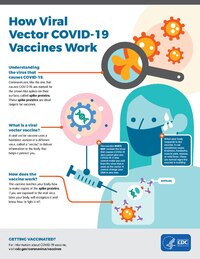
Photo from wikipedia
Adenovirus, a waterborne pathogen responsible for causing bronchitis, pneumonia, and gastrointestinal infections, is highly resistant to UV disinfection and therefore drives the virus disinfection regulations set by the U.S. Environmental… Click to show full abstract
Adenovirus, a waterborne pathogen responsible for causing bronchitis, pneumonia, and gastrointestinal infections, is highly resistant to UV disinfection and therefore drives the virus disinfection regulations set by the U.S. Environmental Protection Agency. Polychromatic UV irradiation has been shown to be more effective at inactivating adenovirus and other viruses than traditional monochromatic irradiation emitted at 254 nm; the enhanced efficacy has been attributed to UV-induced damage to viral proteins. This research shows UV-induced damage to adenoviral proteins across the germicidal UV spectrum at wavelength intervals between 200 and 300 nm. A deuterium lamp with bandpass filters and UV light-emitting diodes (UV LEDs) isolated wavelengths in approximate 10 nm intervals. Sodium dodecyl sulfate polyacrylamide gel electrophoresis and image densitometry were used to detect signatures for the hexon, penton, fiber, minor capsid, and core proteins. The greatest loss of protein signature, indicating damage to viral proteins, occurred below 240 nm. Hexon and penton proteins exposed to a dose of 28 mJ/cm2 emitted at 214 nm were approximately 4 times as sensitive and fiber proteins approximately 3 times as sensitive as those exposed to a dose of 50 mJ/cm2 emitted at 254 nm. At 220 nm, a dose of 38 mJ/cm2 reduced the hexon and penton protein quantities to approximately 33% and 31% of the original amounts, respectively. In contrast, a much higher dose of 400 mJ/cm2 emitted at 261 and 278 nm reduced the original protein quantity to between 66-89% and 80-93%, respectively. No significant damage was seen with a dose of 400 mJ/cm2 at 254 nm. This research directly correlates enhanced inactivation at low wavelengths with adenoviral protein damage at those wavelengths, adding fundamental insight into the mechanisms of inactivation of polychromatic germicidal UV irradiation for improving UV water disinfection.
Journal Title: Environmental science & technology
Year Published: 2018
Link to full text (if available)
Share on Social Media: Sign Up to like & get
recommendations!